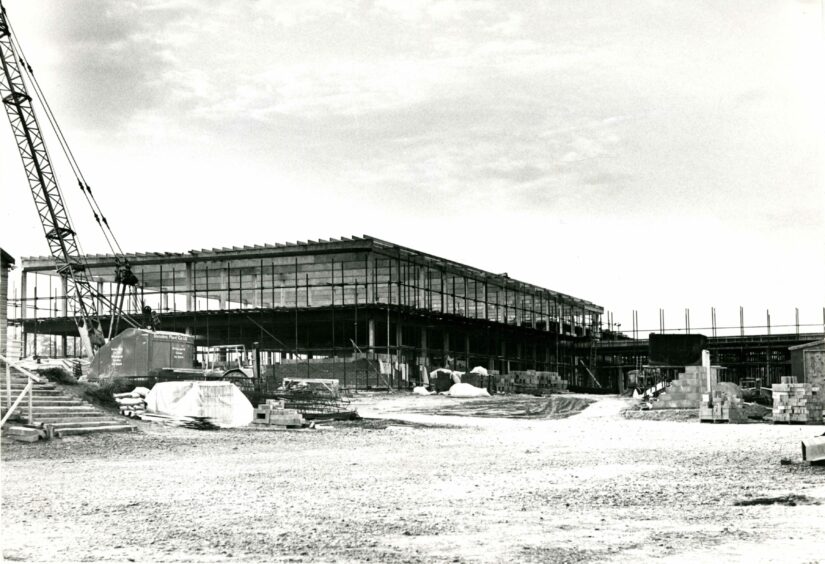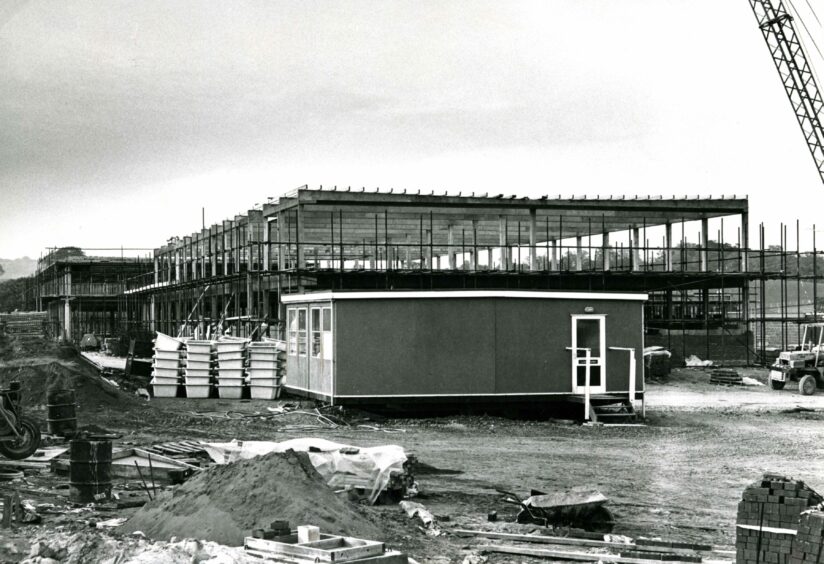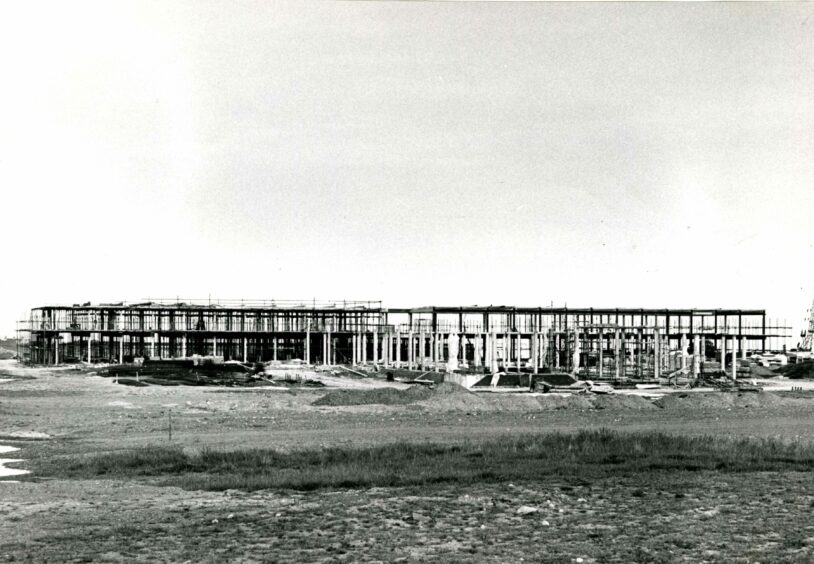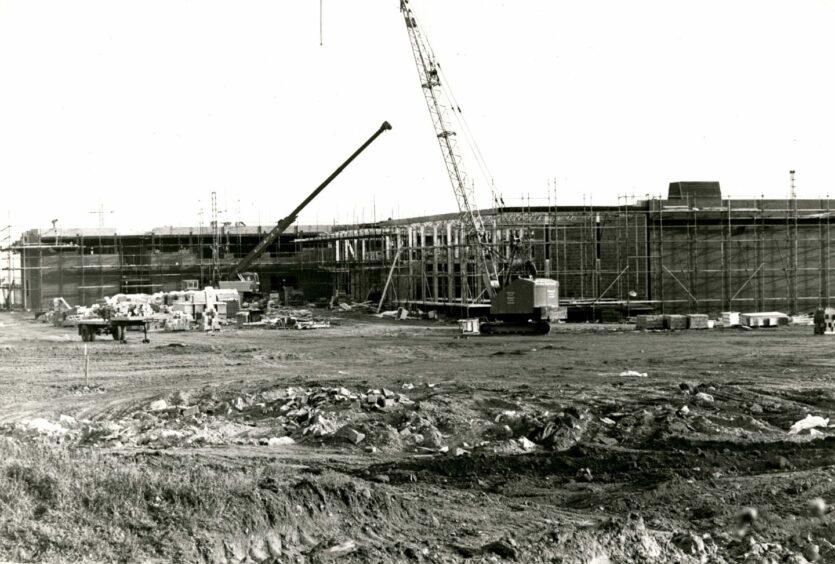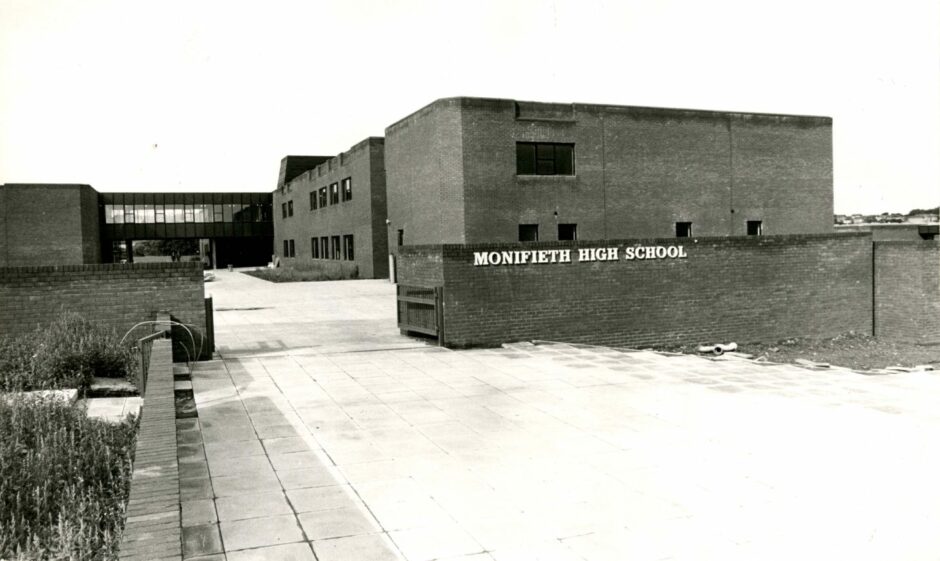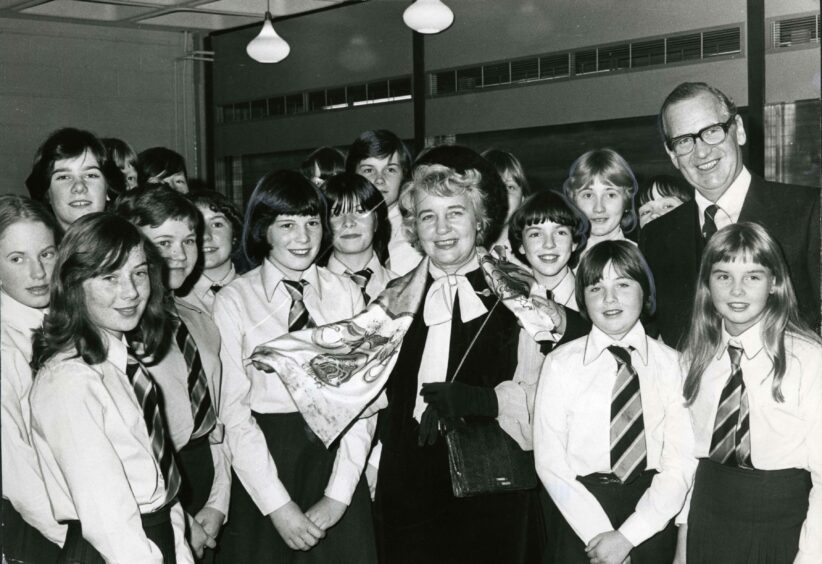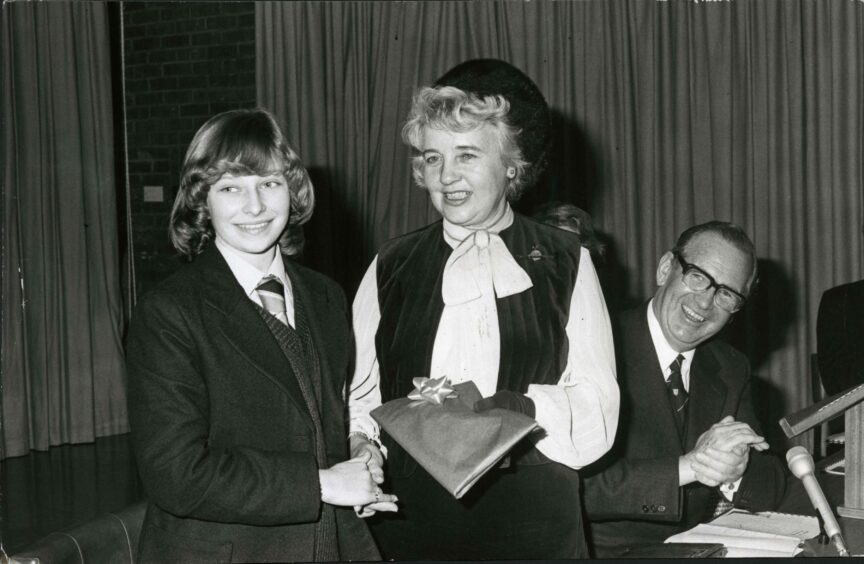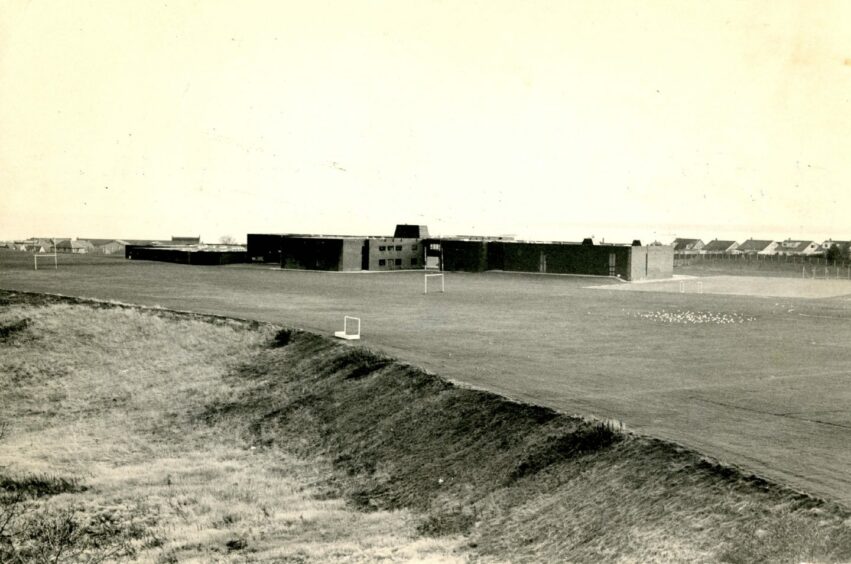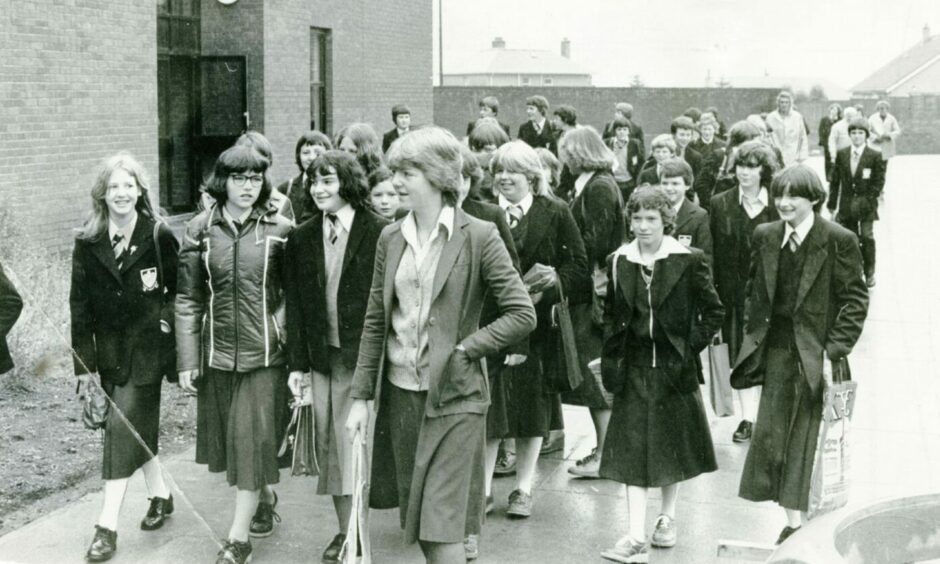
These forgotten photographs chart the construction of the £2 million Monifieth High School, which opened to pupils in August 1979.
The need for a school serving secondary pupils from Monifieth and Barnhill became apparent in the 1960s when the Angus burgh was the fastest growing in the area.
Secondary pupils from Monifieth previously travelled six miles to Carnoustie High School, before village and city were lumped together in 1975 to become a united Tayside.
Monifieth High School was formed in August 1976.
They took temporary possession of the vacant former Stobswell Boys’ Primary School in Dundee’s Melrose Terrace while a permanent building was constructed.
When they started in 1976, school lunch cost 15p per day.
All 132 pupils were taken by bus each day from Monifieth, although the building had not been well maintained and there were problems with the old coal-fired boilers.
Things came to a head when pupils were sent home on January 4 1979 because there was no heating and the toilets were completely frozen and they didn’t return for a week.
A move to the new building couldn’t come quickly enough.
Thankfully work was progressing on the Panmurefield Road complex, which started in 1977 and was the first building project conceived under Tayside Regional Council.
Monifieth High School ‘attractively finished in brown brick facing’
The Evening Telegraph in May 1979 put flesh on the bones and said the “strikingly set building” would be “immediately distinctive” and “features a move away from the concrete and glass style of architecture”.
The 1,050-capacity £2m building was split into three separate blocks and was “attractively finished in brown brick facing”.
Satellite to the main two-storey classroom block was a “practical” block, housing science and technical subjects, home economics, business studies and an arts suite.
Its companion satellite block would house the sports hall, gymnasium and 20-metre swimming pool, with changing facilities.
George McLafferty, a depute director of education with responsibility for building projects, told the newspaper: “The school has been designed as a straight-through six-year comprehensive, although when it opens it will have only the first four years and a roll of between 700 and 800.
“It will then build up to its full capacity over the next two years.
“Importantly, the school has been designed to run either in department blocks or in year groups.
“Although the incoming headmaster intends the school to be run in departmental groups, the design is flexible.”
The Evening Telegraph said the scheduled August 1979 opening of Monifieth High School would “ease the strain” and end the overcrowding problems at Grove Academy.
It said: “For the past two years the relevant intake of pupils at Grove have been asked whether they would like to continue there or transfer to Monifieth High School.
“To the obvious gratification of education officials in Tayside House, the majority have opted for the transfer.
“Most of the roll of 1,050 for which the new school is designed will come from Monifieth, but about a third will be drawn from the Barnhill area.”
Dining facilities and social rooms were included in the building for all age groups and it was hoped the community would make full use of the facilities at Panmurefield Road.
Would everything at new Monifieth High School be completed in time?
Mr McLafferty said: “People from Monifieth have consistently used the community facilities at Carnoustie since the school was opened about 10 years ago.
“We expect a very good response, particularly in the sports and night classes at Monifieth.
“Work on the £2m project is up to schedule.
“The classroom, administration and practical blocks should be completed by August.
“The sports block is not expected to be fully functional in time for the start, but should be finished before the end of the year.”
The new school building finally opened to pupils on August 17 1979.
Pupils had been given three extra holiday days to allow staff to sort out all the furniture, stores and books that had been transported from the Melrose Terrace building.
Do you remember Hector the Rector?
Hector Low was the first rector and his 1979 school log recorded that Monifieth High School opened “minus sports complex, playing fields and corridor”.
Not that it held him back.
Affectionately known as Hector the Rector, Mr Low brought dry wit and inspirational leadership and the school would become one of the highest achieving in Scotland.
An advertising feature in the Evening Telegraph on Monifieth in August 1979 said the new school was “the very best example” of the big changes taking place in the burgh.
It read: “On a simply practical level it’s a tremendous step forward.
“Pupils no longer have to travel the six miles into town.
“They can cycle or walk to school now, and after-school activities suddenly become possible again.
“Better still, the new school, with a catchment area that takes in Barnhill, offers a chance for a greater integration between Monifieth and its surrounds.
“Certainly the townsfolk are eagerly looking forward to a lot of community involvement, with all the facilities available at the school, and community spirit is something of which they have never been short.”
Full facilities were completed in 1980
It took another year for the building to be officially opened on November 17 1980 by Lord Thomson of Monifieth, who served as a Labour MP in Harold Wilson’s cabinet.
He later became a European Commissioner from 1973 to 1977.
Lord Thomson made a thorough tour of the building and offered a prize in modern languages so that pupils did not suffer the same fate as himself in middle-life.
“Little did I think that one day in Brussels it would have to become my second working language, and force me to go back to school in middle-age because I have not applied myself thoroughly in my youth,” he said.
The Thomson Modern Languages prize would be a book for the best student.
Lord Thomson compared school life during history to school life at the present time, and emphasising the importance of education, he urged pupils to make the most of school and to remain there for as long as they could.
The full facilities had just been completed and Monifieth High had 932 pupils and 70 staff by the opening ceremony, which featured a performance by the school orchestra.
School chaplain Rev Tom Milroy gave the prayer of dedication.
The school never looked back.
Monifieth High went from strength to strength in the 1980s before the burgh was transferred from Tayside Region to Angus Council following local government changes.
This caused a major increase in the catchment area from 1996 with school buses now bringing pupils from Birkhill, Liff, Auchterhouse and Newtyle to Panmurefield Road.
Of course, nothing lasts forever.
A new £66.6m Monifieth High School building is due to open in July 2025.
Construction work started in June 2023 on the site of the existing school playing fields and the Monifieth Learning Campus will have a capacity of 1,200 pupils.
The demolition of the current building in August 2026 will complete the project and the classrooms which first teemed with noise and energy in 1979 will fall silent for good.
